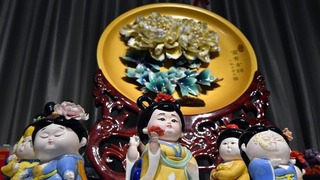A tribute to honesty
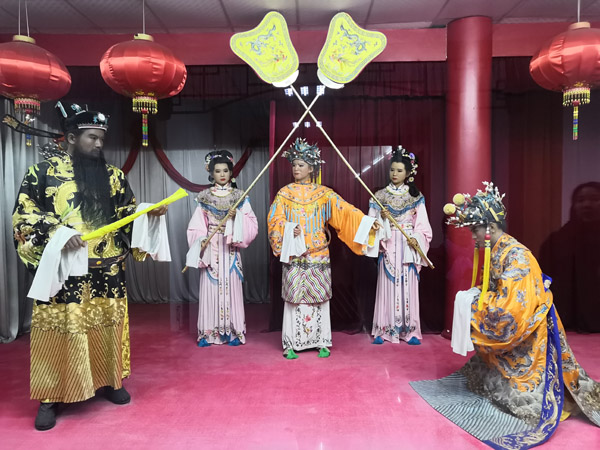
Legendary stories of Bao Zheng can be seen from a museum of waxworks near the Lord Bao Temple. [PHOTO BY WANG RU/CHINA DAILY]
A 1,000 years later, people still remember a Song Dynasty official for his integrity
As a native of Hefei, I used to feel a little ashamed that I had never visited the Lord Bao Park before. I knew of its existence, but it never occurred to me that I should visit it and try to understand the story of my fellow countryman Bao Zheng who lived in the Song Dynasty (960-1279).
Recently, I filled that gap and visited it during this year's Spring Festival holiday.
The Lord Bao Park, located in the provincial city Hefei, in East China's Anhui province, is a memorial park for Bao which comprises Lord Bao Temple, Lord Bao Tomb and Qingfeng Pavilion among other things.
I started from the Lord Bao Temple.
A local tourist guide told me that Bao Zheng studied in the temple when he was young, and it was reconstructed as a memorial temple to commemorate him four years after he died in 1062.
In 1882, Bao's countryman Li Hongzhang, a political heavyweight in the late Qing Dynasty (1644-1911) donated a large sum of money to help reconstruct this temple.
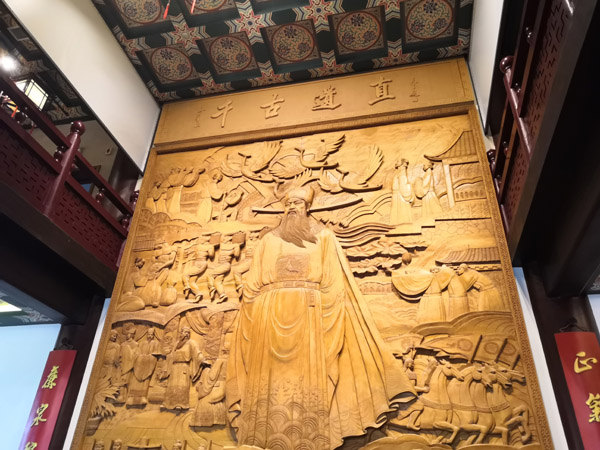
A wooden relief which shows Bao and some of his stories in Qingfeng Pavilion. [PHOTO BY WANG RU/CHINA DAILY]
As soon as I walked into the temple, I saw a golden sculpture of Bao. And besides that, there were three hay cutters that were used to punish members of the royal family who committed crimes, corrupt officials and normal criminals, respectively, implying the uprightness of Bao.
In some way, Bao is more known in legend than in history since legends about Bao started to spread from the Song Dynasty.
Shi Yukun in the Qing Dynasty wrote a famous wuxia novel The Three Heroes and Five Gallants with Bao Zheng as the hero based on folklore, and it was adapted for film and TV later.
Due to the influence of literature and TV, Bao is now an incorruptible master detective with a black face and a crescent on his head in many people's minds. And he worked with swordsman Zhan Zhao, adviser Gongsun Ce and others to crack complicated criminal cases and correct wrong judgments.
He is also famous for his integrity since he did not hesitate to punish criminals who had a high social status.
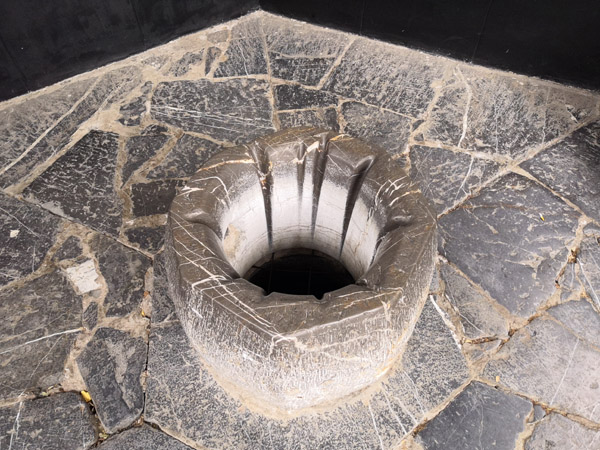
Lianquan Well. [PHOTO BY WANG RU/CHINA DAILY]
Legends about Bao, with regard to the killing of the ungrateful Chen Shimei who abandoned and tried to kill his wife and children in order to marry a princess, are portrayed in a museum of waxworks near the temple.
Outside the temple, there is a well inside a pavilion.
The well is said to be from the time when Bao studied in the temple. And now it is called "Lianquan Well" since "Lian" means "being honest and incorruptible".
According to an article by Li Hongzhang's grandnephew Li Guoheng, a corrupt official once suffered a headache after drinking water from the well.
Later, I walked for several minutes to get to the tomb of Bao and his family members.
Bao died in what is now Kaifeng, in Central China's Henan province, in 1062, and his son-in-law brought his body to his hometown for burial.
It was relocated to where it is today in 1987.
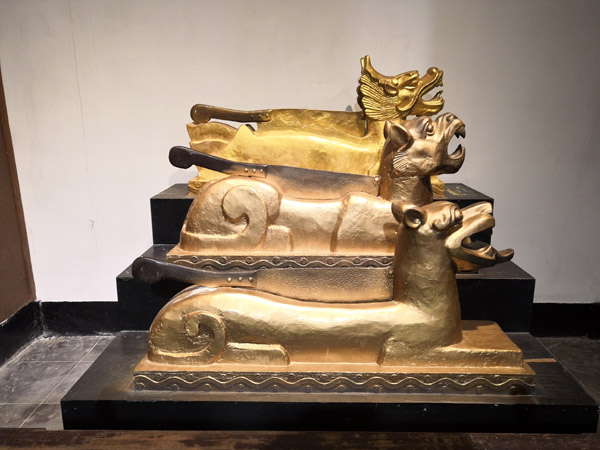
The three hay cutters were used to punish members of the royal family who committed crimes, corrupt officials and normal criminals respectively, implying the uprightness of Bao. [PHOTO BY WANG RU/CHINA DAILY]
Besides, I saw sculptures of tigers, sheep and officials on the road to Bao's tomb, representing his relatively high official status at that time.
And then I saw the tombstone of Bao, with his highest official title, his name and posthumous title on it.
Beside his tomb, there are the tombs of his wife and children and a stone on which his words warning his offspring not to be corrupt are engraved.
In his tomb, I also saw a replica of his epitaph written by his friend Wu Kui, which is put up on the wall though it is incomplete.
And there is a coffin under a light. The coffin is made of precious silkwood. But it is not the original coffin.
Not far from Bao's tomb is the 42-meter-high Qingfeng Pavilion, which was built in 1999 to mark Bao's 1,000th birth anniversary.
There, I saw records and literature about him, which show the historical facts.
Most of the stories about Bao - which feature in film and on TV - are fictions, as are Bao's legendary assistants Zhan and Gongsun.
The real Bao did not have a black face or a crescent, but these things were created to show his selflessness and integrity.
But qualities of uprightness can also be found in the historical records of the time.
When he was an official who was responsible for supervising others, he was just and stern and even impeached prime minister Song Xiang, an uncle of emperor Zhao Zhen's concubine, Zhang Yaozuo and many other high officials.
According to the guide, a Lord Bao Temple can also be found in Zhaoqing, in South China's Guangdong province and Kaifeng, in Central China's Henan province, where Bao once worked. A 1,000 years may have passed, but Bao is still remembered for his integrity.

